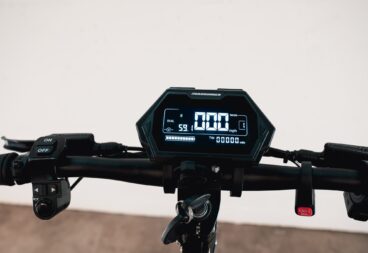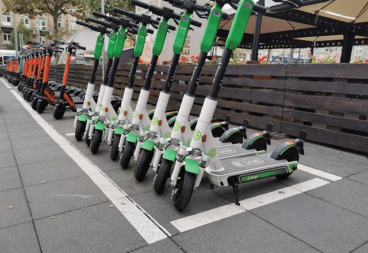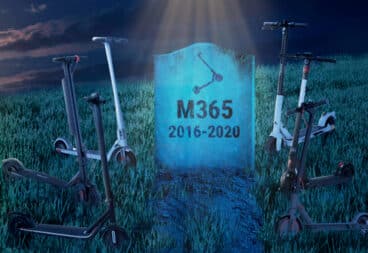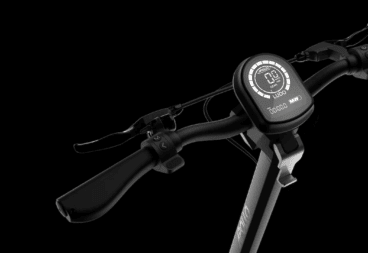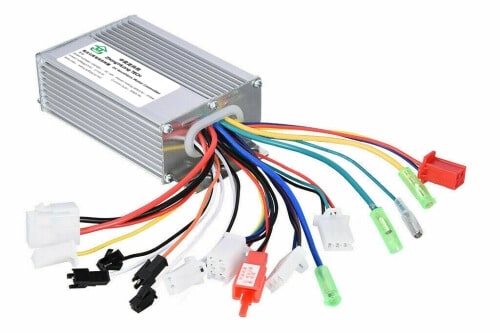
Electric scooter controllers regulate flow of power from the battery to the motor and are a major factor in determining a scooter’s performance capabilities. Keep reading to learn more about how this unassuming component keeps you moving down the road.
What Is an Electric Scooter Controller?
The controller or electronic speed controller (ESC) is an electronic circuit that controls the speed of the motor in an electric scooter. It receives input from the throttle and precisely controls the flow of current from the battery to the motor. For most scooters, the controller also provides regenerative braking capabilities.
Controllers are rated in terms of current (measured in amps) and voltage (measured in volts), with higher-current, higher-voltage controllers being capable of driving more powerful scooters. Controllers range from having sustained max outputs of tens of volts and just a few amps all the way up to 100 volts and 400 amps on Rion hyperscooters.
Controllers that provide regenerative braking (or electronic braking) capabilities are also capable of routing power back from the motor into the battery when activated. Nearly all controllers have this capability. Because energy is dissipated by storing it back in the battery, this functionality only works when the battery is not fully charged. A fully charged battery has no capacity to store more energy.
While most electric scooters have just a single controller that drives a single electric motor, high-performance, dual-motor electric scooters typically have two that share the same throttle input.
Electric Scooter Controller Table
| Scooter Type | Voltage | Current* | Example |
| Budget | 36 V | 10 A | M365 |
| Single Motor Commuter | 48 V | 25 A | Zero 9 |
| High Performance | 52 V | 25 A | EMOVE Cruiser |
| Extreme Performance | 60 V | 40 A | Wolf Warrior 11 |
| Hyperscooter | 100 V | 400 A | Rion RE90 |
How Do They Work?
Controllers are electronic circuits consisting of a programmable microcontroller that receives many inputs including control signals (throttle, brake sensor, and motor speed sensor), a battery connection, and has an output to the electric motor.
The microcontroller/processor is the brain of the ESC and is basically a small computer running a control program or firmware. The ESC listens to various signals and determines the appropriate output and timing signal. The throttle signal is basically a request to the ESC to set the motor at a specific speed (revolutions per minute). The ESC monitors the motor speed either via a hall sensor or by sensing back-EMF from the electric motor and modulates the motor signal in order to achieve the speed “requested” by the throttle.
Some scooters, such as the M365 and Ninebot Max, have user-flashable controller firmware that allows over-the-air updates via bluetooth. This was originally designed to allow the scooter manufacturer to push updates via their included apps. However intrepid enthusiasts have been able to reverse engineer and develop tools to allow you to roll your own firmware and easily flash it. These firmware hacks are generally designed to increase power, top speed, and overall performance at a cost of range and potentially overall scooter life.
Because the processor is a relatively fragile, low power component, it cannot drive the motors directly. Instead, it supplies a relatively weak signal to a network of field-effect transistors (FETs), that drive the motor. These FETs are the business end of the controller and essentially serve as a valve to precisely control the flow of current from the battery to the motor.
FETs are not perfectly efficient and generate significant heat as they are used. They are very easily identifiable on the controller board because they are usually nestled in with large capacitors and often thermally-coupled to a heatsink or the metallic controller case. Robustness of the FETs used as well as thermal dissipation ability often dictate the maximum sustained power that a controller can deliver.
To control the speed of the motor, the controller’s processor drives the FETs with a high frequency signal — switching them on and off rapidly. This high frequency switching produces the characteristic electric motor whine. By varying the duty cycle, or fraction of time that the FETs are in the “on” vs “off” state, the controller can make the motor spin slower or faster.
Aside from modulating the duty cycle of power delivered, the processor also precisely controls the timing of power delivery. This is necessary because of how brushless DC electric motors work. They contain a rotor made of permanent magnets that rotates relative to fixed electromagnets. Most electric scooter motors have 20 to 40 individual electromagnets or poles. Like cylinders in a car, these poles must be activated with precise timing that varies depending on the speed of the motor. A sensor measures the speed of the motor, allowing the processor to vary the frequency with which it activates the electromagnetic poles in the motor.
Notable Electric Scooter Controllers
VESC Project
VESC Project is an open-source high-performance electric speed controller project with software and hardware designs hosted on Github . The VESC is capable of driving small drones and remote-controlled vehicles, personal electric vehicles, all the way up to electric cars. VESC Project was started by Benjamin Vader and by 2020 had grown to numerous contributors around the world.
Stormcore from Lacroix Boards
The Stormcore is a high-performance controller based on software and hardware from the VESC Project. Stormcore is used in the Apollo Pro Ludicrous and Apollo Ultra Ludicrous scooters. Stormcore carries a lineup of controllers ranging all the way up to the Stormcore 100D.
Check out our current ESG Editor’s pick of the best electric scooters on the market!
